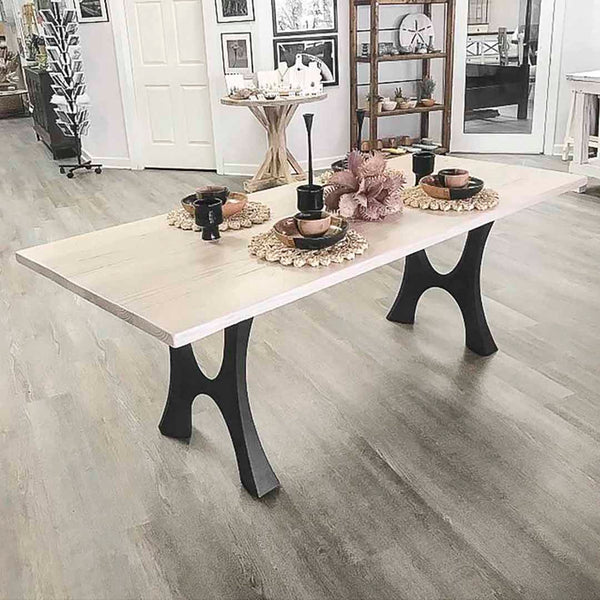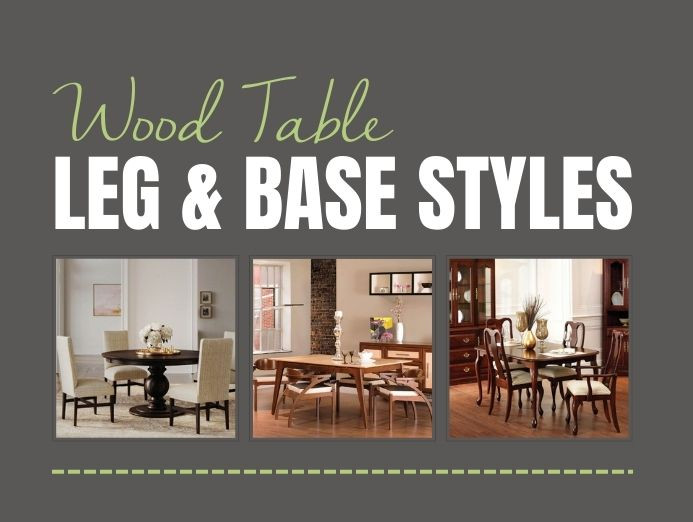How to Choose the Perfect Dining Room Table Legs for Your Home
How to Choose the Perfect Dining Room Table Legs for Your Home
Blog Article
Professional Tips for Setting Up Dining-room Table Legs for Optimum Security
When it comes to setting up dining space table legs, attaining maximum stability is extremely important for both performance and aesthetic appeals. What certain techniques can improve security also further?
Pick the Right Legs
When selecting the appropriate legs for your dining-room table, it is necessary to take into consideration both functionality and visual appeals. The legs you pick will substantially affect the total style and stability of the table. Initially, assess the table's meant use; if you expect regular gatherings, sturdier legs, such as those made from strong timber or metal, might be preferable, as they use enhanced durability and assistance.
Typical eating tables normally vary from 28 to 30 inches in height, so ensure the legs straighten with this requirement for comfort. Tapered legs can include a modern touch, while turned legs may communicate a more timeless aesthetic.

Select Appropriate Hardware
How can the appropriate equipment boost the stability and long life of your dining space table? The option of suitable hardware is crucial to guaranteeing that the legs of your table are firmly connected and able to hold up against regular usage. Premium screws, screws, and brackets supply the required toughness to support the weight of the table, as well as any additional loads put upon it during events or dishes.
When choosing screws, select those made from long lasting materials such as stainless steel or brass, which resist deterioration and maintain integrity over time. The length of the screws is equally important; they should pass through deeply right into the table's structure without compromising honesty. For bolted connections, think about utilizing lock washers to stop loosening due to vibration or movement.
Furthermore, utilizing edge brackets can add additional support, especially for bigger tables or those with heavier tops. These braces disperse weight equally and help maintain the table's form. Making certain that the equipment you pick is proper for the certain materials of your table will certainly further boost its overall stability and durability, permitting you to enjoy your dining experience for several years ahead.
Ensure Proper Placement
Correct positioning of eating room table legs is crucial for both visual appeal and practical security. To attain optimal placement, start by gauging the distance from the table's edges to the leg attachment points.
Make use of a level during setup to validate that each leg is vertical to the table top. This step is crucial, as even minor inconsistencies can intensify into considerable security issues over time. It is advisable to mark the desired leg positions on the bottom of the table with a pencil or masking tape prior to safeguarding them. This technique works as an aesthetic guide, permitting modifications as required.
Furthermore, confirm the placement after the first screws are tightened up, as adjustments might be required prior to totally safeguarding the equipment. By prioritizing appropriate alignment, you not just boost the table's total style but additionally ensure that it stays secure and practical for many years to find.

Consider Weight Circulation
After guaranteeing appropriate positioning of the dining-room table legs, it's crucial to take into consideration weight circulation to improve stability and additional reading functionality. dining room table legs. Correct weight distribution is essential in avoiding tottering and ensuring that the table can support its intended lots without threat of tipping or falling down
When positioning the legs, guarantee they are placed at equivalent distances from the center of the table to evenly disperse the weight throughout the framework. Take into consideration the weight of the tabletop and any items that will frequently hinge on it, such as ornamental pieces or tabletop home appliances. Tables with heavier surfaces ought to ideally have legs located closer to the corners, as this takes full advantage of the base of assistance and reduces the danger of instability.
Additionally, if the table is planned for use in a high-traffic location, consider making use of larger products for the legs or adding stabilizing elements, such as cross-bracing or a lower shelf - dining room table legs. These modifications can assist keep equilibrium and avoid moving throughout usage. Ultimately, a well-considered weight distribution technique will substantially improve the table's overall performance, ensuring it remains a functional and appealing centerpiece for your dining space
Test Security Before Use
Checking the security of the dining-room table before use is an important action that needs to not be forgotten. Making sure that the table is stable and safe and secure can stop crashes and prolong the life expectancy of the furnishings. Begin by using mild pressure to various factors on the table surface area. Lower on the center and afterwards along the sides, shifting or observing any wobbling. If the table reveals instability, identify the legs or joints that may need adjustment.
Next, check that all screws and bolts are tightened correctly. Loose links can bring about instability and potential damage in time. If required, use wood glue on joints to enhance stability, making certain to permit appropriate drying out time.

Final Thought
To conclude, the installment of dining area table legs needs careful consideration of products, alignment, visit this web-site weight, and hardware distribution to achieve optimum security. By picking sturdy legs and high-grade bolts, making sure precise placement, and distributing weight uniformly, the structural stability of the table can be significantly improved. Conducting a stability test before regular use even more makes certain that the table will certainly stand up to daily stress, therefore supplying a secure and reliable dining experience.
When it comes to setting up dining room table legs, accomplishing maximum stability is extremely important for both capability and looks. click to investigate The legs you choose will substantially influence the general style and security of the table (dining room table legs). Typical dining tables usually vary from 28 to 30 inches in height, so make sure the legs line up with this criterion for convenience.Appropriate alignment of dining room table legs is vital for both visual allure and functional stability.In verdict, the installment of eating space table legs requires careful factor to consider of products, positioning, weight, and hardware circulation to accomplish optimum security
Report this page